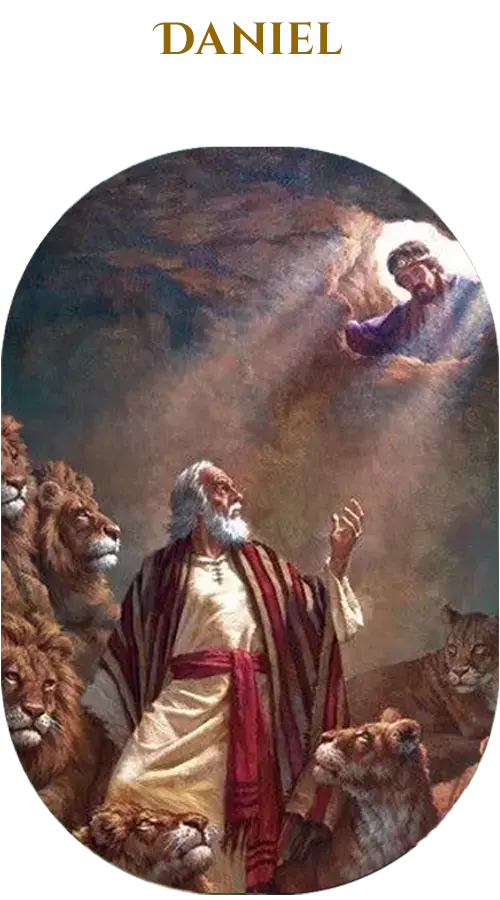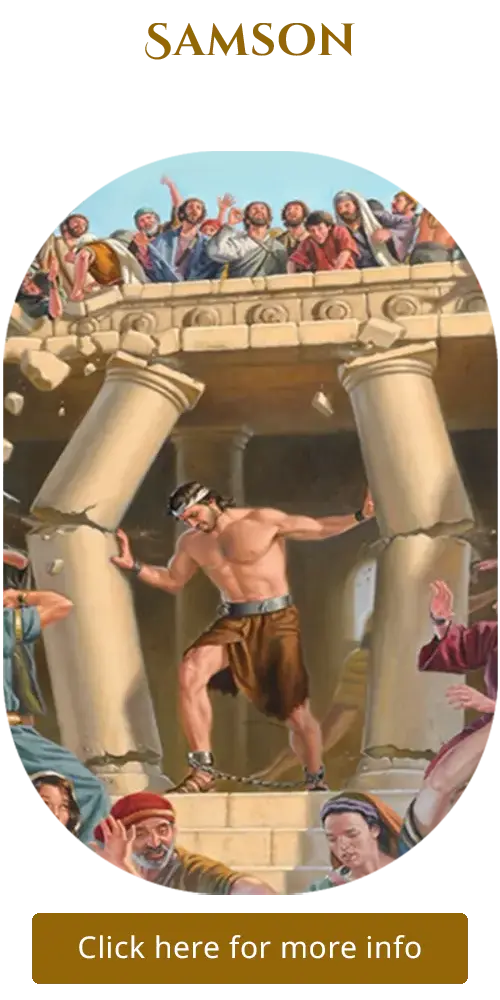St. Barthlomew
Outside Paintings - South Wall
Daniel: Prophet of Integrity and Visions

 |
 |
Reference: Book of Daniel, Ezekiel 14:14, 28:3, Matthew 24:15
A Jewish exile in Babylon, Daniel is celebrated for his wisdom, faith, and prophetic visions, navigating the courts of foreign kings while remaining devoted to God.
Early Life and Exile
Daniel, likely born around 620 BCE in Judah, was from a noble or royal family. When Nebuchadnezzar II, king of Babylon, besieged Jerusalem in 605 BCE, Daniel was among the young men taken captive to Babylon. Selected for his intelligence and appearance, he was trained in Babylonian language, literature, and culture to serve in the royal court. Renamed Belteshazzar, he maintained his Jewish identity, refusing to defile himself with the king’s food, likely due to dietary laws. God granted him favour with the chief official, and Daniel and his friends – Hananiah (Shadrach), Mishael (Meshach), and Azariah (Abednego) – excelled in wisdom, surpassing their peers.
Service in Babylon
Nebuchadnezzar’s Dream
Around 603 BCE, Nebuchadnezzar had a troubling dream of a colossal statue with a gold head, silver chest, bronze waist, iron legs, and feet of iron and clay, shattered by a stone. When the king’s wise men failed to interpret it, Daniel, through divine revelation, described the dream and its meaning: the statue represented successive kingdoms (Babylon, Medo-Persia, Greece, Rome, per traditional interpretation), with the stone symbolizing God’s eternal kingdom. Impressed, Nebuchadnezzar promoted Daniel to governor and chief of the wise men.
Fiery Furnace
Nebuchadnezzar erected a golden statue, demanding worship from all officials. Shadrach, Meshach, and Abednego refused, citing loyalty to God. Thrown into a fiery furnace, they were miraculously unharmed, accompanied by a fourth figure, possibly an angel or theophany. Nebuchadnezzar praised their God and promoted them. Daniel’s absence from this narrative suggests he may have been elsewhere or exempt due to his status.
Further Service and Visions
Daniel interpreted Nebuchadnezzar’s second dream, predicting the king’s seven-year period of madness for his pride, which came to pas. After Nebuchadnezzar’s death (562 BCE), Daniel served under Belshazzar. During a feast, Belshazzar saw a handwriting on the wall: “Mene, Mene, Tekel, Parsin”. Daniel interpreted it as God’s judgment on Babylon’s fall to the Medes and Persians, which occurred that night in 539 BCE. The new ruler, Darius the Mede (possibly a title for Cyrus or a governor), appointed Daniel as a high official.
Lion’s Den
Jealous officials tricked Darius into issuing a decree forbidding prayer to any god or man except the king for 30 days. Daniel continued praying to God, leading to his arrest. Thrown into a lions’ den, he was protected by an angel, emerging unharmed. Darius executed the conspirators and decreed reverence for Daniel’s God.
Prophetic Visions
The latter half of Daniel records apocalyptic visions received under Belshazzar, Darius, and Cyrus. These include:
– Four Beasts: Representing four kingdoms, culminating in God’s judgment and the “Son of Man” receiving eternal dominion, a messianic figure in Jewish and Christian thought.
– Ram and Goat: Symbolizing Medo-Persia and Greece, with a “little horn” (often linked to Antiochus IV Epiphanes, c. 175–164 BCE).
– Seventy Weeks: A prophecy of 70 “weeks” of years, interpreted variously as predicting the Messiah or events like the Maccabean revolt.
– Final Visions: Detailed conflicts involving a “king of the north” and “king of the south,” culminating in resurrection and judgment.
Daniel likely died in Babylon or Persia, possibly in his 80s or 90s.
Significance
In the Eastern Orthodox Church, the Prophet Daniel is venerated as one of the four Great Prophets of the Old Testament, celebrated for his unshakable faith, wisdom, and prophetic insight during the Babylonian exile. His life exemplifies courage, purity, and steadfast devotion, making him a model of faithfulness in a corrupt world and a pivotal figure in salvation history.






